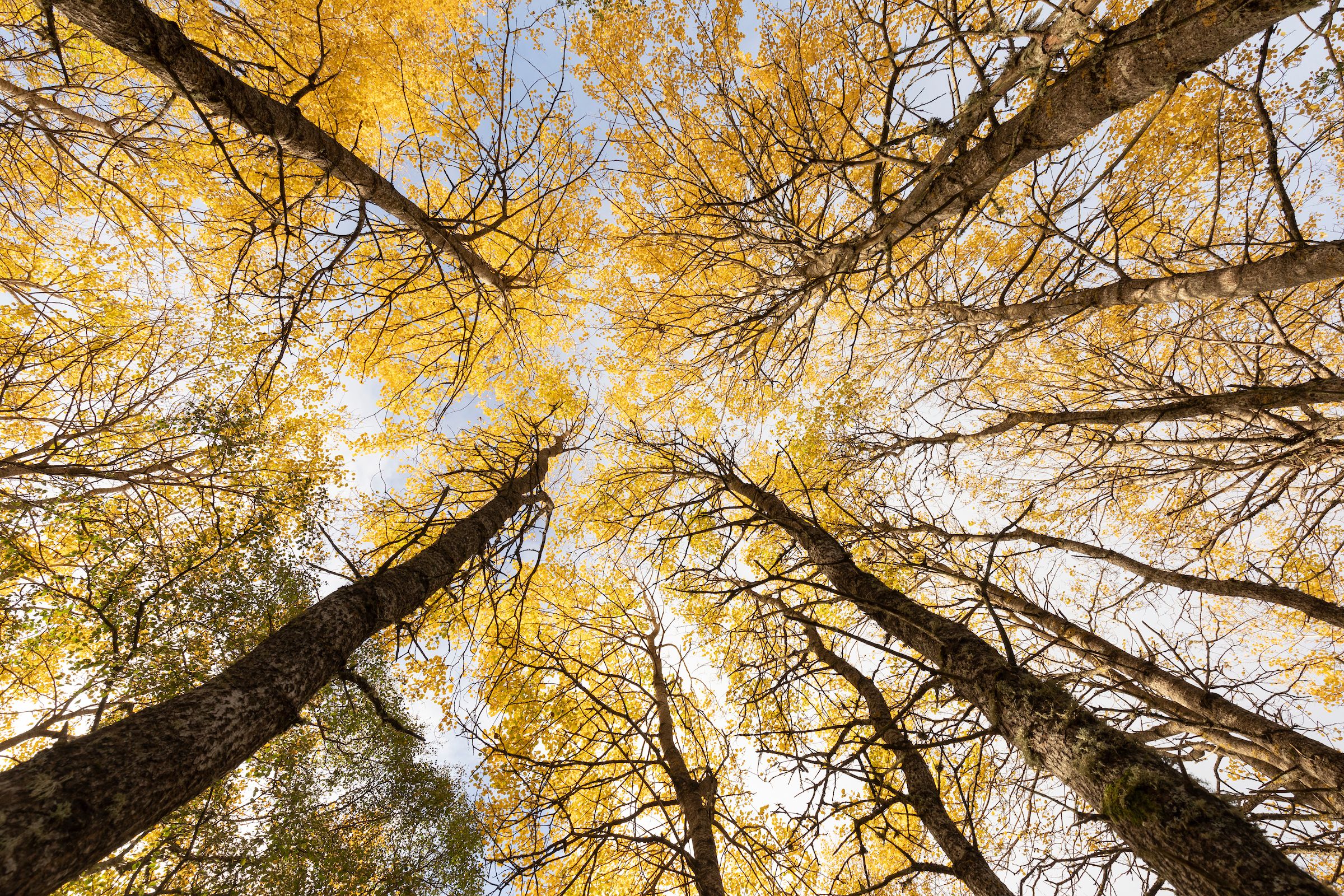
Guest blog from Scotland: The Big Picture
Scarcity often amplifies value. From rare minerals to endangered species, things that are scarce command our attention, our investment, our care. As one of Scotland’s rarest native trees, the golden aspen deserves all three. Shimmering in autumn sunshine, this striking species is more than a beautiful presence in our depleted woodlands – it’s a biodiversity powerhouse and a quiet ally in the fight against climate change.
Biodiversity powerhouse
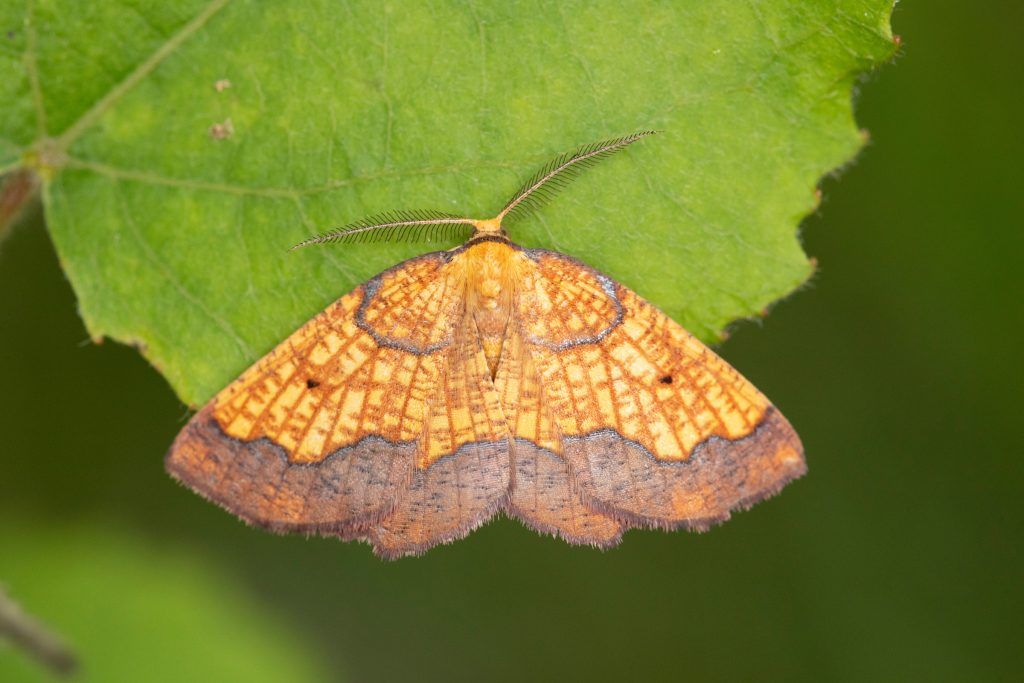
Image: Mark Hamblin
Aspen supports a remarkable range of life. Its leaves feed more than 60 species of insect, while rare fungi, lichens and mosses thrive on its bark. Its Highland groves host specialist species such as the aspen hoverfly and the dark-bordered beauty moth, neither of which can be found anywhere else in the UK. Beavers relish aspen’s nutritious stems, while birds such as crested tits and capercaillie benefit from the woodland corridors that aspen helps to stitch together.
The tree’s ability to reproduce through suckering means it often grows in tight groups, creating dense thickets that offer cover and forage for a variety of animals. In this way, aspen provides both a home for wildlife and a stepping-stone, linking otherwise fragmented habitats and enriching the fabric of our woodlands.
Climate ally
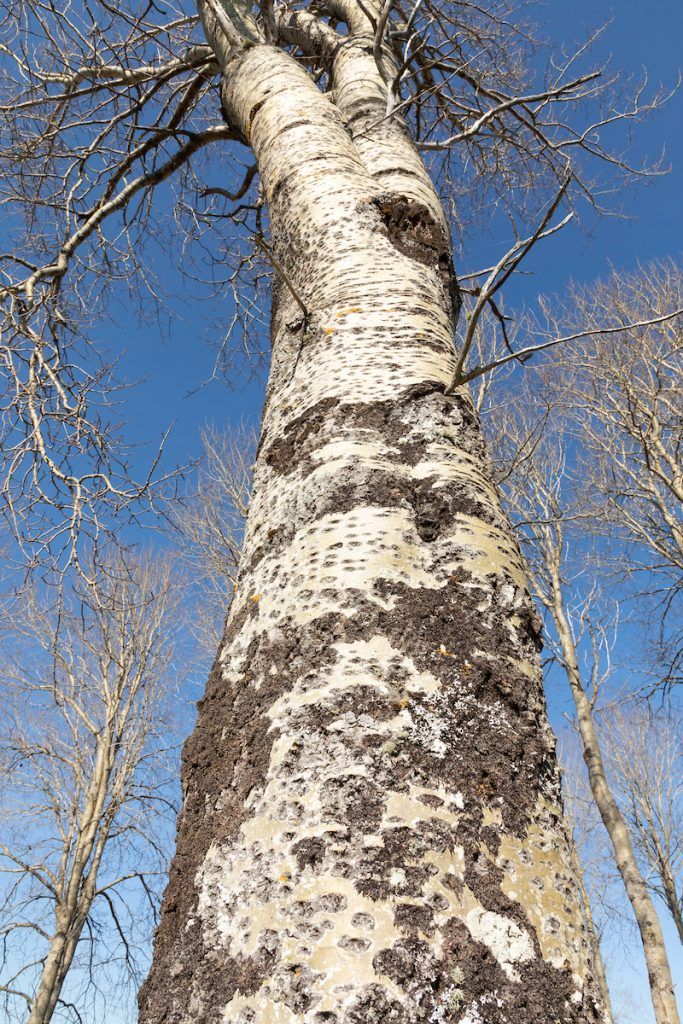
Image: Mark Hamblin
Aspen grows fast – up to two metres a year! – and dies young, making it especially efficient at locking up carbon quickly. Thanks to this efficiency, aspen provides a crucial defence against climate change, particularly as part of a diverse woodland mix. Along riverbanks, aspen helps to stabilise soils and reduce erosion during floods. Its leafy canopy casts welcome shade over salmon rivers, keeping water cool at a time when rising summer heat is making many of Scotland’s rivers too warm for salmon to survive.
In North America, aspen is prized for its resistance to wildfire, slowing the spread of flames in conifer plantations. As the risk of wildfire increases here in Scotland, this quality is yet another good reason to call for more aspen in our landscapes.
Tree in trouble
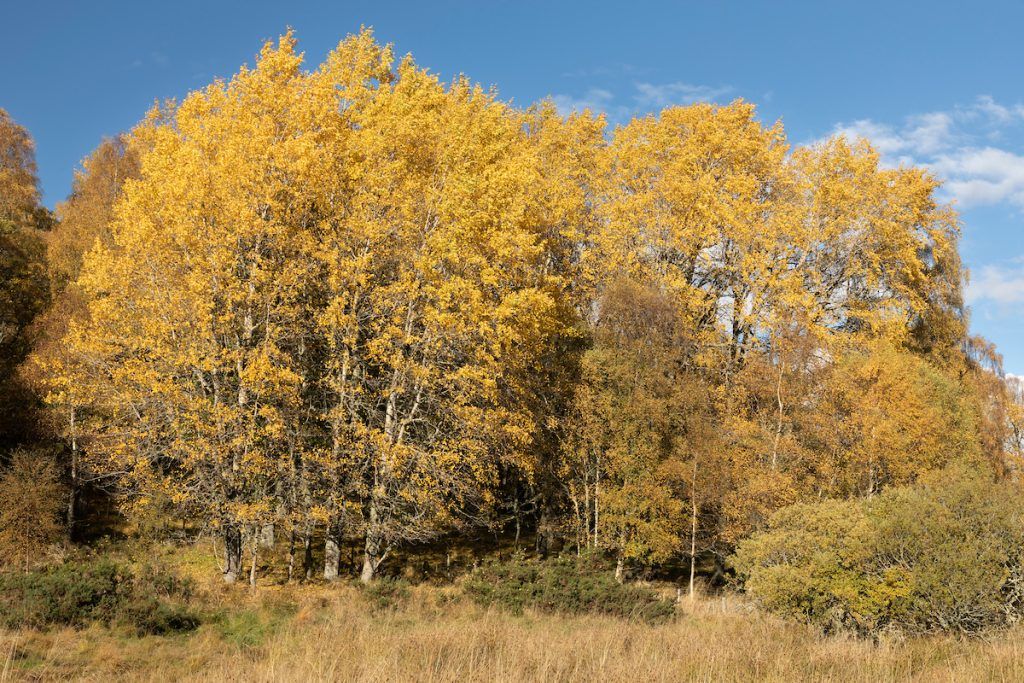
Image: Mark Hamblin
Despite these extraordinary qualities, aspen remains one of Scotland’s most threatened trees. Overgrazing by deer and sheep has long suppressed natural regeneration, while historic planting schemes often overlooked the species altogether. Today, large stands of mature aspen survive in only a handful of places, mostly in the Highlands. Without concerted action, this golden tree risks becoming even rarer.
Nature’s shield
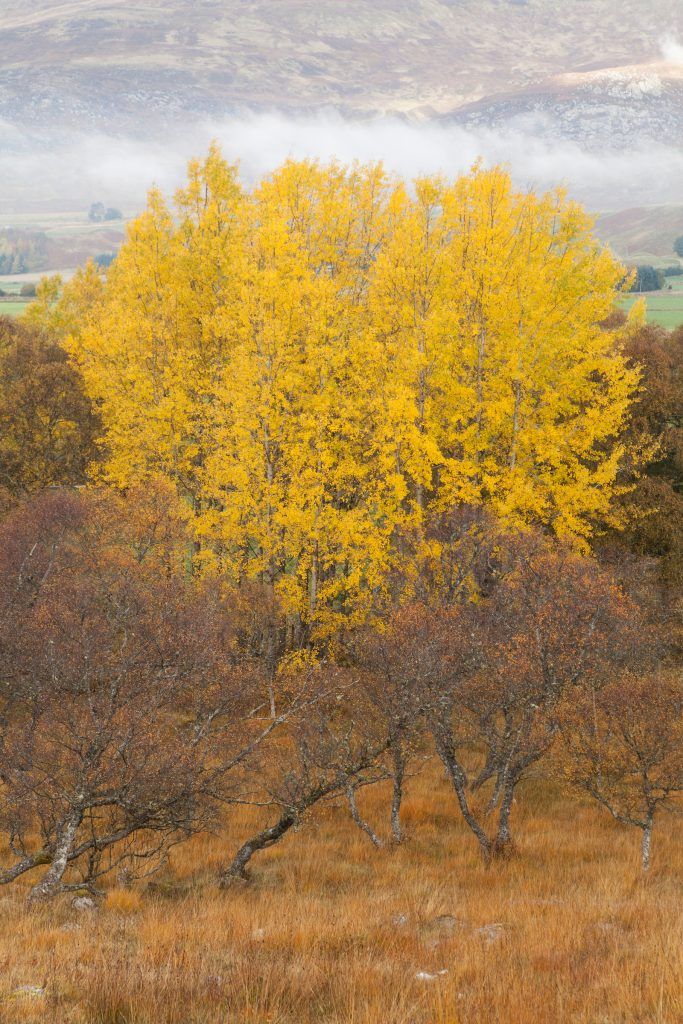
Image: Mark Hamblin
Aspen is a tree unlike any other. Its presence strengthens ecosystems, boosts resilience to climate change and creates habitats for species found nowhere else. It also brings beauty – whole hillsides glowing gold each autumn – and culture: it was used by the ancient Celts to make shields. Its Gaelic name, crann critheach, refers to its trembling leaves, renowned for their quaking, whispering quality.
Returning aspen to our landscapes means protecting a rare species, but also investing in the wider health of Scotland’s woodlands and rivers too. Aspen woodlands are living mosaics that benefit people and wildlife alike, from the dragonflies skimming new wetlands to the communities reconnecting with wild places through restoration projects.
The future’s golden
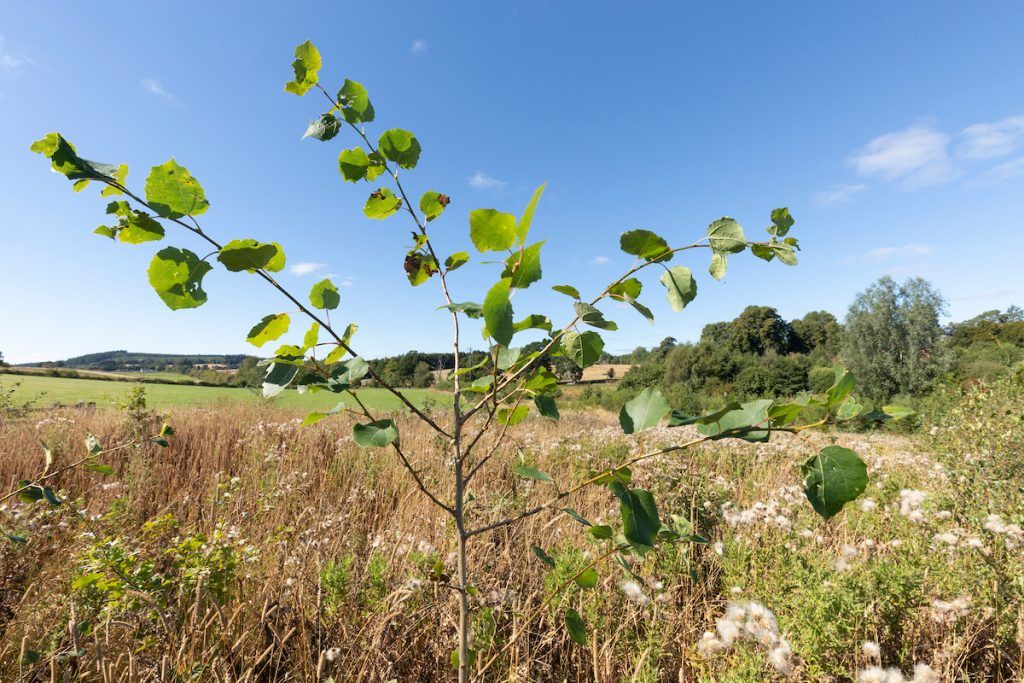
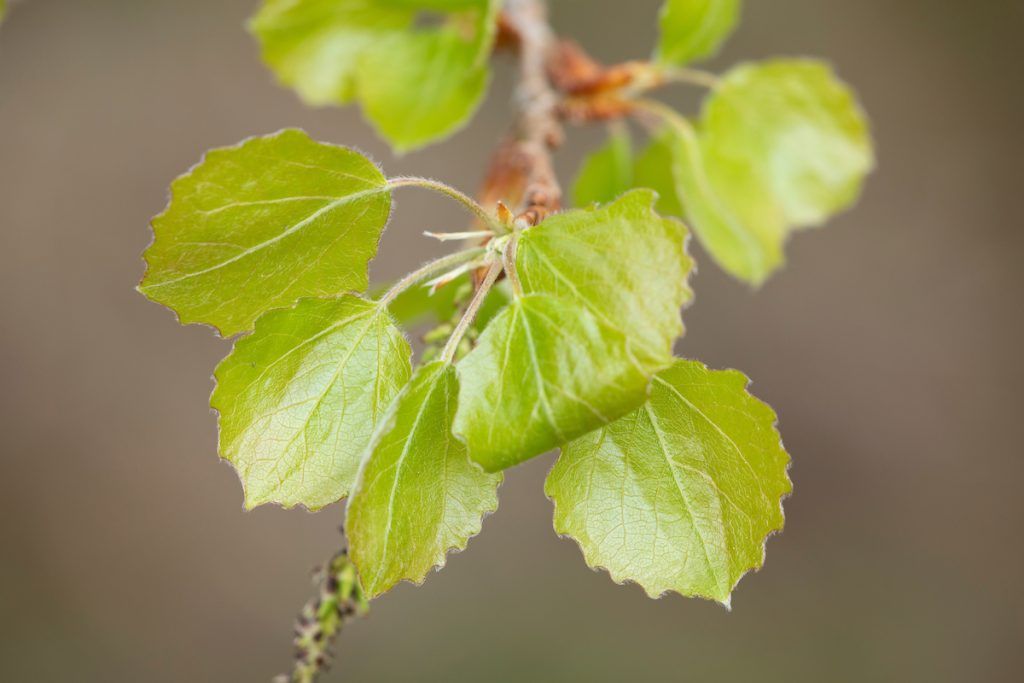
For too long, Scotland’s forestry has been dominated by a narrow focus on commercial timber. But as we shift towards creating woodlands that deliver for nature, climate and people, aspen has a key role to play. It may never dominate the landscape the way Sitka spruce has, but that’s precisely its strength: aspen thrives as part of a mix, weaving diversity and resilience into our forests.
And its future depends on all of us. From learning more about aspen to planting saplings or making space for aspen to regenerate naturally, every action we take will help. A Scotland rich in aspen would be richer in wildlife, more resilient to climate change and infinitely more beautiful.
Painting Scotland Yellow

Enter SCOTLAND: The Big Picture. Its Painting Scotland Yellow campaign is raising the profile of aspen as a vital – and undervalued – part of healthy woodlands. From films, stories and social media posts to webinars and community events, our campaign celebrates aspen and inspires more people to act on its behalf.
At its heart is a simple message: Scotland needs more aspen. That means more space for natural regeneration – where reduced grazing pressure allows aspen to return on its own – and more planting of young aspens, especially in places where the tree has disappeared entirely. By working with landowners, policymakers, foresters and communities, Painting Scotland Yellow aims to create a future where aspen’s golden leaves are a common sight once more in Scotland’s woodlands, river valleys and uplands.
Keen to hear from aspen experts? Sign up to join SCOTLAND: The Big Picture’s FREE podcast on Thursday 4 September at 7pm: https://www.scotlandbigpicture.com/event-registration/webinar-psy/173
Learn more about aspen at: https://www.scotlandbigpicture.com/painting-scotland-yellow

